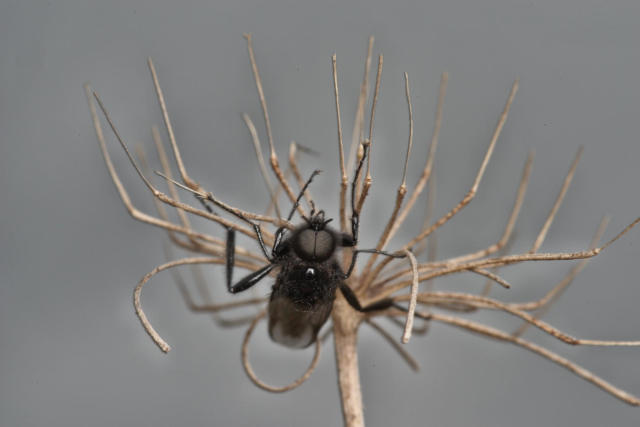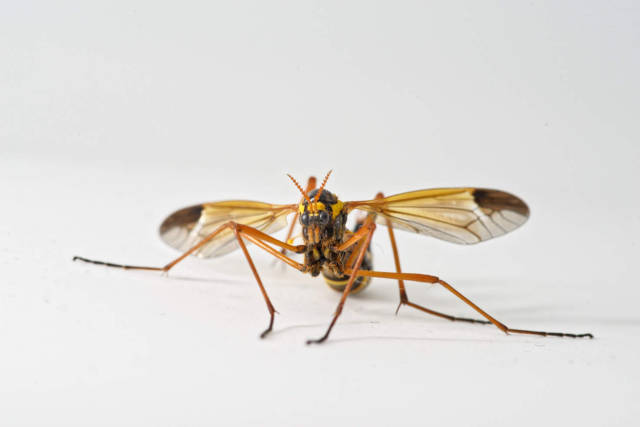#diptera

As shaggy as the old umbel of the great Hogweed on which it found refuge against the cold April wind, a freshly hatched Saint Mark’s fly.

Aphids form very dense colonies on young elderberry stems. A godsend for this hoverfly larva

Crane fly
A beautiful female of Ctenophora elegans (Tipulidae)
aCyrtopogonmarginalis becomes frustrated as it fails to pierce the armor of a click beetle, similar to how i felt upon realizing i, a self-proclaimed robberfly superfan, was unaware that yesterday was world robberfly day
(Massachusetts, 5/25/19)

Hanging thief robberfly (Diogmitescrudelis) preying on a large sweat bee (Dieunomiaheteropoda). (Florida, 9/2/21)
From what I’ve observed, Diogmites’habit of dangling from one or two legs while handling prey seems to help them make a quick escape if disturbed by a larger predator while feeding, but also probably keeps dangerous stinging prey at a safe distance from the fly’s body as they struggle before the venom sets in.
Sometimes reaching nearly 2” in length, D.crudelis is the largest hanging thief and one of the largest north american robberflies overall. Its scientific name translates as something along the lines of “ruthless pursuer” or “cruel hunter”

Florida beekiller (Mallophorabomboides) feeding on a Polistes paper wasp (Florida, 9/25/21).
This huge hairy robberfly found primarily in open habitats in Florida is not only a bumblebee mimic, but also a specialist predator that feeds almost exclusively on bees and wasps. A related species from South America, M. ruficauda, sometimes eats enough bees to cause 80% losses in honey production around apiaries.
The bee mimicry of Mallophora is typically assumed to be an antipredator adaptation, but it has also been hypothesized that they practice aggressive mimicry, appearing as a bumblebee to avoid alarming their prey.

an absolute bastard of a giant robberfly (Promachusbastardii) preying on a honeybee
(Florida, 4/7/21)
Papaya flies (Toxotrypanacurvicauda), unusually large and fucked up members of the fruit fly family Tephritidae that use the longest ovipositor I’ve ever seen on a fly to lay eggs in papayas.
The skin and flesh of unripened papayas is toxic, so they use their ovipositor to deposit eggs in the seeds, which are what the larvae feed on until the fruit is ripe. They’re kinda like a vegetarian fly version of Megarhyssawasps.
(Florida, 3/19/21)

Big headed fly(pipunculidae) + disco ball fakemon
I now know why they call these insects “hanging thieves.” After they catch their prey, these flies perch by one or two of their legs and using the rest to manipulate the meal. Their larvae live in the soil, feeding on grubs. No insect is safe with these predators around.
#inthegarden #diptera #arthropods #damselfly #hangingthief #odonate #beneficialbugs #nativeplants #garden #gardener #gardenersworld #predatorandprey #predator #hunting #biodiversity #ecology
Post link


